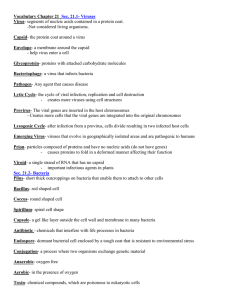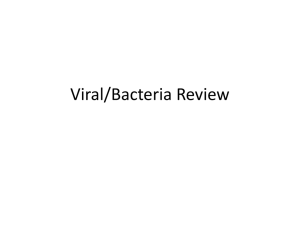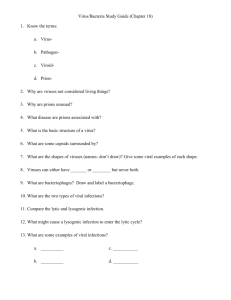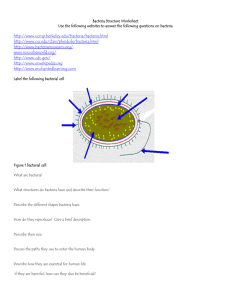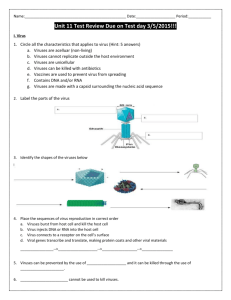Microbiology Study Guide
advertisement
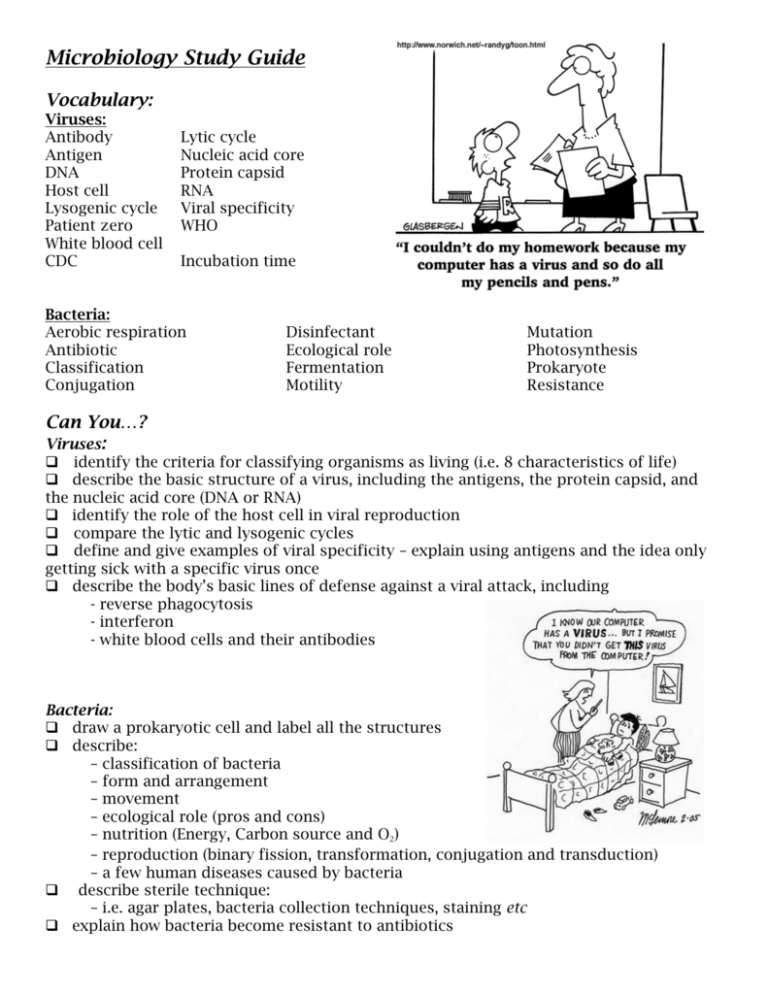
Microbiology Study Guide Vocabulary: Viruses: Antibody Antigen DNA Host cell Lysogenic cycle Patient zero White blood cell CDC Lytic cycle Nucleic acid core Protein capsid RNA Viral specificity WHO Incubation time Bacteria: Aerobic respiration Antibiotic Classification Conjugation Disinfectant Ecological role Fermentation Motility Mutation Photosynthesis Prokaryote Resistance Can You…? Viruses: identify the criteria for classifying organisms as living (i.e. 8 characteristics of life) describe the basic structure of a virus, including the antigens, the protein capsid, and the nucleic acid core (DNA or RNA) identify the role of the host cell in viral reproduction compare the lytic and lysogenic cycles define and give examples of viral specificity – explain using antigens and the idea only getting sick with a specific virus once describe the body’s basic lines of defense against a viral attack, including - reverse phagocytosis - interferon - white blood cells and their antibodies Bacteria: draw a prokaryotic cell and label all the structures describe: – classification of bacteria – form and arrangement – movement – ecological role (pros and cons) – nutrition (Energy, Carbon source and O2) – reproduction (binary fission, transformation, conjugation and transduction) – a few human diseases caused by bacteria describe sterile technique: – i.e. agar plates, bacteria collection techniques, staining etc explain how bacteria become resistant to antibiotics

